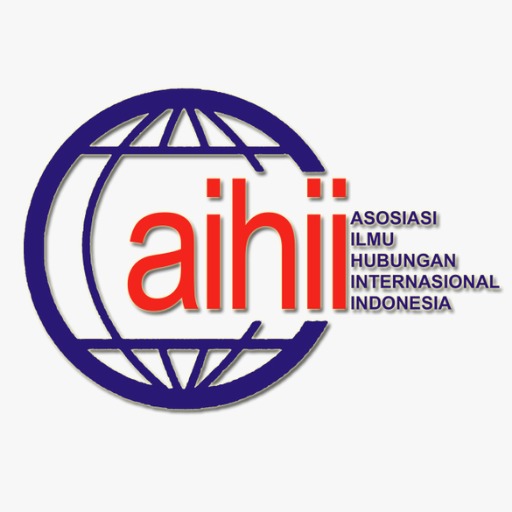Desain Kewilayahan dan Posisi Middle Power dalam Strategi Hedging Kazakhstan terhadap Rusia dan Tiongkok
Downloads
Kazakhstan dihadapkan pada kontestasi Rusia dan Tiongkok yang
berkompetisi untuk memperoleh pengaruh dan meningkatkan keterlibatan
mereka di wilayah Asia Tengah sejak tahun 1990-an. Dalam menghadapi
situasi tersebut, Kazakhstan menjalankan kebijakan luar negeri hedging
yang termasuk dalam tajuk ‘multi-vector policy'. Hal ini memiliki keunikan
karena Kazakhstan secara geografis merupakan negara landlocked dan
memiliki hubungan historis yang dekat dengan Rusia. Pertanyaan yang diajukan
dalam tulisan ini adalah mengapa Kazakhstan melakukan kebijakan
luar negeri hedging dalam melakukan hubungan dengan Rusia dan Tiongkok
di Asia Tengah? Tulisan ini lantas menggunakan perspektif geopolitik
kewilayahan dan posisi middle power negara untuk mencari jawaban atas
pertanyaan tersebut. Hasil analisis penulis menunjukkan bahwa kebijakan
hedging yang dilakukan oleh Kazakhstan dengan Rusia dan Tiongkok dipengaruhi
oleh adanya perubahan desain kewilayahan Kazakhstan yang
akhirnya memengaruhi perspektif elit sehingga memilih menjalankan kebijakan
mencirikan middle power, yaitu hedging.
Buku atau Artikel dalam Buku
Schatz, Edward, 2004. Modern Clan Politics: The Power of "Blood”
in Kazakhstan and Beyond. Seattle: University of
Washington Press.
Artikel Jurnal
Ambrosio, Thomas dan William A. Lange, 2014. "Mapping
Kazakhstan's Geopolitical Code: An Analysis of Nazarbayev's
Presidential Addresses, 1997-2014”, Eurasian Geography
and Economics, 55 (5): 537-559.
Atzili, Boaz dan Burak Kadercan, 2017. "Territorial Designs and
International Politics: The Diverging Constitution of Space and
Boundaries”, Territory, Politics, Governance, 5 (2): 115-130.
Branch, Jordan, 2016. "Territory as an Institution: Spatial Ideas,
Practices, and Technologies”, Territory, Politics, and Governance,
(2): 131-144.
Cheng-Chwee, Kuik, 2008. "The Essence of Hedging: Malaysia and
Singapore's Response to a Rising China”, Contemporary
Southeast Asia: A Journal of International and Strategic
Affairs, 30 (2): 159-185.
Hanks, Reuel R., 2009. "'Multi-Vector Politics' and Kazakhstan's
Emerging Role as a Geo-Strategic Player in Central Asia”,
Journal of Balkan and Near Eastern Studies, 11 (3): 257-267.
Idan, Avinoam dan Brenda Shaffer, 2011. "The Foreign Policies of
Post-Soviet Landlocked States”, Post-Soviet Affairs, 27 (3):
-268.
Kadercan, Burak, 2017. "Territorial Design and Grand Strategy in
the Ottoman Empire”, Territory, Politics, Governance, 5 (2):
-176.
Scholvin, Soren dan Mikael Wigell, 2018. "Power Politics by Economic
Means: Geoeconomics as an Analytical Approach and
Foreign Policy Practice”, Comparative Strategy, 37 (1): 73-
Smith, Jeremy, 2016. "The Transformation of Soviet Republic
Borders to International Borders: Competing Concepts of the
Kazakhstan-Russia Border”, Journal of Borderlands Studies,
(1): 91-104.
Vinokurov, E., 2017. "Eurasian Economic Union: Current State and
Preliminary Results”, Russian Journal of Economics, 3 (1):
-70.
Weitz, Richard, 2006. "Averting a New Great Game in Central Asia”,
The Washington Quarterly, 29 (3): 155-167.
Laporan Penelitian dan Tesis
Ayazbekov, Anuar, 2014. Independent Kazakhstan and the ‘Black Box'
of Decision-Making: Understanding Kazakhstan's Foreign
Policy in the Early Independence Period (1991-4). Disertasi.
St Andrews: University of St Andrews.
Karzhaubayeva, Ainur, 2013. Frontier Migration between Kazakhstan
and Russia: The Case of the West Kazakhstan. Disertasi
Doktoral. Praha: Faculty of Science, Department of Demography
and Geodemography, Charles University.
OECD, 2017. OECD Territorial Reviews: Kazakhstan. Paris: OECD
Publishing.
Peyrouse, Sebastien, 2012. "Central Asia's Long-Term Questions
Remain Unanswered After the Shanghai Cooperation
Organization Summit”, Foreign Policy and Civil Society
Program on Wider Europe, The German Marshall Fund of
the United States.
Sultangaliyeva, Alma, 2016. "Kazakhstan and its Negihbors:
Opportunity and Limitation”. Working Paper. The Institute
of World Economics and Politics under the Foundation of the
President of Kazakhstan Leader of the Nation.
Publikasi Daring
China International Water Law Programme, t.t. "Sino-Kazakhstan
Joint Declaration on Further Deepening Comprehensive Strategic Partnership” [daring]. Tersedia dalam https://
www.internationalwaterlaw.org/documents/regionaldocs/
China-Kazakhstan_declaration_7_Sept_2013-CIWL_
unofficial_translation.pdf [diakses pada 8 September 2018].
Collective Security Treaty Organization, 2002. "Charter of the
Collective Security Treaty Organization” [daring]. Tersedia
dalam http://www.odkb-csto.org/documents/detail.
php?ELEMENT_ID=1896 [diakses pada 21 September
.
Kamalova, Gyuzel, 2014. "Nazarbayev Calls to Solve Boarder
Security Issues at SCO”, Tengrinews [daring]. Tersedia
dalam https://en.tengrinews.kz/politics_sub/Nazarbayevcalls-
to-solve-boarder-security-issues-at-SCO-256112/
[diakses pada 5 September 2018].
Kazpravda, 2015. "Kazakhstan Reminds the SCO About the
Water Scarcity Problem” [daring]. Tersedia dalam
https://www.kazpravda.kz/en/news/politics/kazakhstan-
reminds-the-sco-about-the-water-scarcity-problem/
[diakses pada 5 September 2018].
OEC, t.t. "What Does Russia Export to Kazakhstan? (2016)”, the Observatory
of Economic Complexity [daring]. Tersedia dalam
https://atlas.media.mit.edu/en/visualize/tree_map/hs92/
export/rus/kaz/show/2016/ [diakses pada 15 September
.
Peyrouse, Sebastien, 2008. "Sino-Kazakh Relations: A Nascent
Strategic Partnership”, Jamestown [daring]. Tersedia dalam
https://jamestown.org/program/sino-kazakh-relations-anascent-
strategic-partnership/ [diakses pada 8 September
.
Shodganga t.t. Negotiations and Settlements of Border Disputes
[online]. dalam http://shodhganga.inflibnet.ac.in/bitstream/
/119862/9/09_chapter%203.pdf [diakses
pada 12 September 2018].
- Authors retain the copyright of their article without restrictions and grant the journal right of first publication with the work simultaneously licensed under a Creative Commons Attribution License that allows others to share the work with an acknowledgment of the work's authorship and initial publication in this journal
- Authors are able to enter into separate, additional contractual arrangements for the non-exclusive distribution of the journal's published version of the work, with the condition that it is not intended for commercial purposes, and cite an acknowledgment of its initial publication in this journal.
- Authors are permitted and encouraged to post their work online (e.g., in institutional repositories or on their website) prior to and during the submission process, as it can lead to productive exchanges, as well as earlier and greater citation of published work (See The Effect of Open Access). However, authors are not allowed to share their work with other journals or publishers as it may lead to conflicting publication processes.

This work is licensed under a Creative Commons Attribution-NonCommercial-ShareAlike 4.0 International License.














